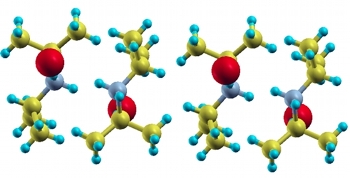Jan 29 2013
The electronics industry has a remarkable impact on the environment, yet research is devising new solutions to reduce it. Among these, a new compound with an unutterable name, the diisopropylammonium bromide (DIPAB), a new ferroelectric material created by an international team of researchers that include Massimo Capone and Gianluca Giovannetti of Istituto Officina dei Materiali at CNR and of the International School for Advanced Studies of Trieste (SISSA), whose research has been just published in Science magazine.
 Organic image
Organic image
“A ferroelectric material has properties analogous to those of a magnet in electricity, a system in which the electric dipoles tend to ‘line up’” explains Capone. Materials with such characteristics are key in the production of electronic devices, from ordinary computers to solar cells. The materials that are usually employed, like barium or titanium oxides, have a very strong impact on the environment and, besides, require complex equipment for their production. “This is not the case of the organic compound we have elaborated and studied, that can be processed very easily from aqueous solution and has a low impact on the environment” comments Giovannetti. And not only it is environmentally friendlier, but also cheaper.
By improving its response at the processing stage, the use of such material may spread to the field of electronic devices. The theoretical study carried out by Giovannetti and Capone aims at identifying new materials with even better characteristics and to fine-tune their processing. “The process currently employed still shows some small errors, that is, exhibits a percentage of processed molecules that differs from what expected”, points out Capone. “By improving such aspect DIPAB may be employed in the future in the production, for instance, of computer memory.”
More in detail...
DIPAB is defined as a molecular crystal. What does that mean? “Basically it is a lattice in which at each point, instead of a single atom, as observed in normal crystals, an entire molecule is found,” explains Capone. “This is a crucial aspect, as such molecules feature ‘tails’ that can orient themselves much more easily than what occurs with ions in atomic crystals, thus favouring polarization.” Capone, supported by the European Research Council ERC through a prestigious “Starting Grant”, believes that the DIPAB processing is only a starting point, and that molecular compounds may replace oxides in several other fields of application, including devices based on superconductors.